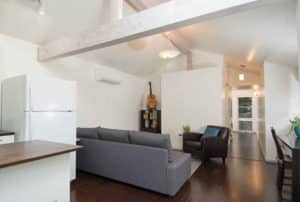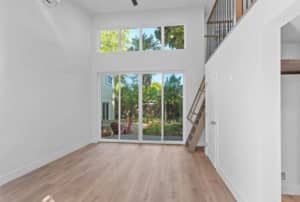





A link to download your FREE brochure will be in your inbox in 3 minutes



















The final price may vary based on project specifics.
To get a free accurate quote tailored to your needs, book a consultation with us today!

The price per square foot provided is an average and may vary depending on project-specific details such as materials, location, complexity, and other factors. Actual costs may differ from the average provided.
It is recommended to obtain a detailed quote based on the specific requirements of your project.

Please note that the monthly payment displayed on this page is an estimate and is subject to variation based on the selected loan product, applicants credit score, loan amount, and other financial details. Actual monthly payment may differ from the estimate provided.
It is recommended to seek advice from a financial advisor or loan officer to obtain precise payment information tailored to individual circumstances.
 Your Trusted
Local Contractor
Your Trusted
Local Contractor
 One of the issues with accessory dwelling units is that they may feel confined. If your main house occupies most of the land or there are different structures in your backyard, a general contractor will likely advise you on a smaller ADU. In cases of significant space restrictions, you have to make use of every inch of your property.
One of the issues with accessory dwelling units is that they may feel confined. If your main house occupies most of the land or there are different structures in your backyard, a general contractor will likely advise you on a smaller ADU. In cases of significant space restrictions, you have to make use of every inch of your property.
High ceilings are a way to visually enlarge small spaces; extending them sideways is not an option. However, some types of high ceilings, for example, vaulted ceilings, are not as easy to implement in an ADU project.
You wonder how to create the illusion of an increased ADU footprint? Want to make your accessory dwelling unit appear more open and spacious? Let’s delve into ways to raise your ceiling height without spending a fortune on the complicated ADU design!
Do you believe that an ADU is essentially a small space? There are plenty of ways to enhance the perception of spaciousness in a small accessory dwelling unit or junior accessory dwelling unit, and high ceilings are one of them.
High ceilings serve multiple purposes, such as:
If you’re unable to add square footage physically, you can try to expand interior spaces visually. Vertical accents like vaulted ceilings lead the eye upward, making the room feel taller and generally larger.
Taller ceilings give room to large windows, which enables more natural light to enter your living space, making it brighter and minimizing the necessity to employ electrical appliances.
The more you let the air circulate inside your space, the better your living environment is. This efficient way of creating good ventilation allows you to save money on air conditioning and other expensive HVAC devices.
Have you thought about adding more storage space in the form of mezzanines? Or maybe you planned to incorporate lofts or intricate lighting fixtures? A small second story is a great way to bring all these ideas to life.
Searching for a way to integrate more room into your ADU project? Consider an idea with elevated ceilings to create more open space under the roof!
If a high ceiling is just a ceiling that’s higher than a standard one, a vaulted ceiling is an element that follows the roofline of the ADU. They are angular, asymmetrical ceilings, with the peak at the highest point. Although vaulted ceiling design may create a sense of sophistication in your ADU, it typically has a higher cost than a simple high ceiling. That is because vaulted ceilings, with their intricate elements, demand more difficult structural engineering.
Thus, if you’re looking for affordable housing solutions, an ADU design with tall but even ceilings can serve the same purpose: to provide a sense of vertical spaciousness.
The major homeowner problems with tall ceilings are potential increases in construction costs, complexities related to adhering to building codes and acquiring permits, the possibility of affected airflow within an ADU, and also the complexity of the design process. Another issue is that if you raise your ceiling by making modifications to the walls, it may potentially compromise the stability of the structure.
That’s why, before construction, it’s advisable to take the following steps:
The tall ceiling creation process consists of multiple stages, such as preparation, obtaining permits and approvals, material selection, and the building itself. When you construct tall ceilings, you make the necessary modifications to the structure. It may involve reinforcing existing supports or adding extra structural elements like extra beams, lateral bracing, or the underpinning of the foundation. The increased vertical space may also require adding more utility connections. The construction process encompasses removing existing ceiling materials, altering framing, and installing new components of the ceiling.
It is invaluable to use the advice of professional ADU builders, designers, architects, engineers, and other adept experts who possess knowledge and expertise in the field of ADU construction. Only a thorough search, a carefully planned layout of the project, and the identification of possible pitfalls can reduce time, effort spent on the building, and the project cost.

Tall ceilings may be a costly option for an ADU unit, and most homes cannot afford everything at once. That is why we gathered some ADU design solutions that can reduce the cost a bit so that you can increase the spaciousness and functionality of your property.
Here are a few ways to add cool features to a seemingly tiny area without getting into debt:
These doors usually have divided glass panels that may serve as exterior doors leading to the garden. Multi-window structures let in a lot of natural light, contributing to great solar gain for the whole floor.
If you’ve allocated enough money for that, a loft is a very stylish solution. However, if you just need some space for storage, you might as well go for an attic and save tens of thousands of dollars.
It may seem that large kitchen appliances are more expensive than their smaller counterparts, but essentially, that is not true. Of course, if you care more about saving space, then smaller appliances will suit you. But if you want to be more economical, we recommend that you buy some of the appliances in standard sizes and some smaller ones.
If you aim for a rustic-style ADU house, wood-framed windows are almost a necessity. But if your design is more modern or minimalistic, vinyl-framed windows serve their purpose just as well.
Maybe you’ve always imagined your ideal family bedroom with a solid hardwood floor? If not, consider laminate or, especially, vinyl. This option is more costly than traditional laminate but is way cheaper than hardwood.
Surely, you can install a pricy marble-tile custom shower, but if your purpose is to cut unnecessary costs, then opting for simple bathrooms may be a wise solution. Especially if you notice a nice-looking shower or a toilet, you can really save a great deal on installation.
An ADU is a secondary home built on the same lot as your main home. Like all homes, they feature bedrooms, bathroom spaces, kitchens, and other versatile rooms. The idea of ADUs is to create more affordable housing options to support people with low incomes and provide them with housing opportunities while offering benefits to homeowners.
If you want to generate more living space within the footprint of your property, you may choose to construct an ADU. ADUs in Sacramento differ in size, cost, layout, and design, allowing for plenty of customizable options for every taste and budget. You can opt for a garage conversion or a detached ADU in your backyard, a small studio ADU or a loft ADU, as well as a larger two-bedroom ADU.
There are many ways of doing so. First, you can extend it sideways by changing the position of the wall. Secondly, you can build a taller ceiling to extend the room upward. Both of these options require major-scale construction. If you don’t want to make a complete rehaul, simply opt for multifunctional furniture and other space-saving designer solutions.
While the second floor offers more privacy and design flexibility, it may not be permissible in every situation due to general height restrictions. Also, typically, it takes more money to build a whole new floor than to extend your ceiling a bit more. On the other hand, tall ceilings require less extensive construction work and material and serve the same purpose: to create a more open feel in the living space without actually adding any square footage.
Get a First Look at Real ADU Projects